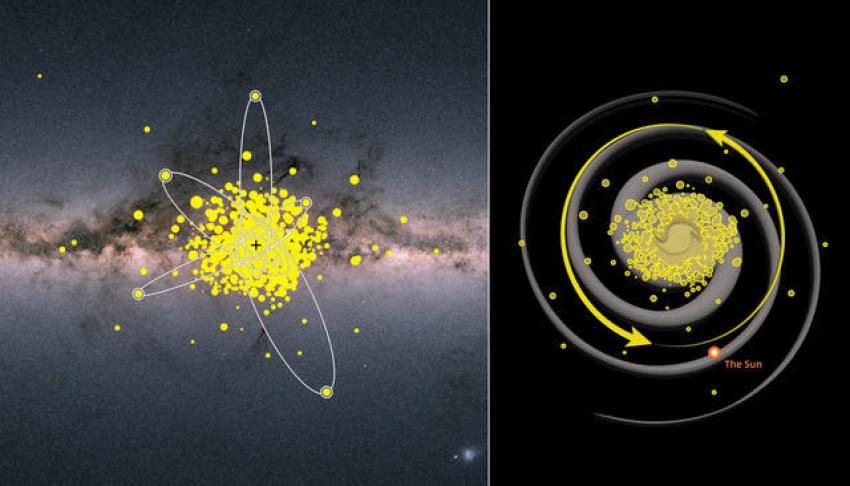Many stars that were born in the first billion years of the universe are now dead and gone. Some exploded in supernovae, some changed into other objects – but not all of these early stars have stopped shining. Some are still around, and researchers have reported the discovery of a population around the core of the Milky Way and, more excitingly, how they are moving.
To hunt for the oldest stars in our galaxy, astronomers look for those stars that are not “polluted.” The very first stars only had hydrogen and helium as their components, and all the other elements – which astronomers call metals for simplicity and to anger chemists – were created in these stars.
So a star with low metallicity, with only small amounts of elements heavier than helium, is a star that formed a long time ago. It is easier to find these objects away from the plane of the Milky Way. They are easier to spot, but this team clearly liked a challenge and looked toward the most crowded region of our galaxy, its center, known as the bulge.
“It is quite challenging as it mostly younger stars there, we need a very efficient selection method to find these stars,” Dr Anke Arentsen from the University of Cambridge told IFLScience. “What I have been working on over the past few years, building a real-life sample of these stars.”
Location and orbits of the ancient stars in the center of the Milky Way.
Image Credit: left background – ESA/Gaia, artist impression: Amanda J. Smith and Anke Arentsen, Institute of Astronomy, Cambridge
The bulge is believed to have formed first as the galaxy evolved, so older stars had to be there. The new work in particular focuses on the motion of these stars around the bulge. They are a chaotic bunch, moving in peculiar orbits around the central region of the Milky Way – but it is not complete chaos. There is an average rotation that is consistent with the rotation of the disk of the Milky Way. Messy, but they still fall in line with almost all the other stars in the galaxy.
The data also shows that their orbit and interactions have never taken them too far from where they were born. Almost all of their lives were spent in the inner Milky Way, never going beyond 10,000 light-years from the center. The Sun is at 26,000 light-years.
“What we are actually seeing is that most of them are staying there. People have asked me: ‘Are these stars just passing through? Are they on very elliptical orbits spending a little bit of time in the inner parts?’ What we are finding is that they are staying there,” Dr Arentsen told IFLScience.
The work was presented this week at the National Astronomy Meeting 2023 at the University of Cardiff.
Source Link: Ancient Stars Discovered Still Orbiting The Center Of The Milky Way
